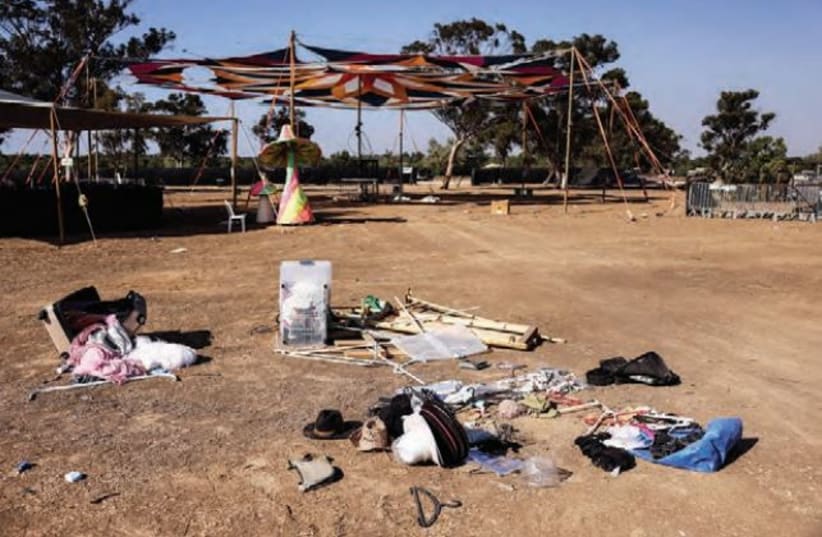Many questions arise from the HonestReporting media watchdog report published earlier this week that showed several major news outlets, including the Associated Press (AP) and Reuters, had Palestinian photojournalists on the ground during the early hours of the October 7 Hamas invasion and terrorist atrocity.
The introduction to the HonestReporting study notes: “On October 7, Hamas terrorists were not the only ones who documented the war crimes they had committed during their deadly rampage across southern Israel.”
The NGO noted some serious ethical concerns: “What were they [the photojournalists] doing there so early on what would ordinarily have been a quiet Saturday morning? Was it coordinated with Hamas? Did the respectable wire services, which published their photos, approve of their presence inside enemy territory, together with the terrorist infiltrators? Did the photojournalists who freelance for other media, like CNN and The New York Times, notify these outlets? Judging from the pictures of lynching, kidnapping, and storming of an Israeli kibbutz, it seems like the border has been breached not only physically, but also journalistically.”
Journalists acted as accomplices to Hamas
The National Public Diplomacy Directorate in the Prime Minister’s Office issued a statement, saying it viewed the matter “with utmost gravity,” adding: “These journalists were accomplices in crimes against humanity; their actions were contrary to professional ethics.”
The Journalists Association in Jerusalem also issued a statement, saying: “If indeed representatives of news agencies and major networks knew in advance about the planned massacre, this raises a prima facie concern of complicity in a crime or failure to prevent murder. The investigation raises serious ethical questions, not only about the conduct of field personnel, but also about the management of networks and news agencies, and the question is whether they knew about Hamas’s intention, and yet lent it a hand.”
Like other organizations, the Journalists Association called for a thorough investigation – not only to determine whether the photojournalists knew of the massacre ahead of time, but whether they could have acted differently and saved the lives of the more than 1,400 murdered in the mega-atrocity and prevented the abduction of the more than 240 people of all ages still being held hostage in Gaza.
Israeli journalist Amit Segal shared on X (formerly Twitter) disturbing footage, showing freelance photojournalist Hassan Eslaiah, who has done work for both AP and CNN, riding on a motorcycle equipped with a grenade.
Government Press Office Director Nitzan Chen demanded explanations from the bureau chiefs of AP, Reuters, CNN, and The New York Times.
In a KAN Reshet Bet interview on Thursday, Chen said regardless of whether the photojournalists had arrived with the first wave of terrorists who broke through the fence or with the second wave of those who carried out the atrocities, they had clearly violated journalistic ethical codes and perhaps international law. The networks should not hide behind excuses that these were freelance stringers, he said.
These so-called photojournalists made no effort to stop or distance themselves from the barbaric events. On the contrary: They were mobilized by the Hamas terrorists to glorify their acts, help promote their terrorism, and spread fear among their enemies – Israel and the West. In this way, too, Hamas recalls ISIS, which deliberately recorded its beheadings and other barbaric murders.
Looking ahead, the HonestReporting report’s findings have implications regarding future coverage by these major networks and others as Operation Swords of Iron progresses in Gaza. It calls into question, of course, the objectivity of foreign media coverage of the events in Gaza and elsewhere and how Israel is portrayed.
Many Israeli journalists have faced a painful dilemma during the endless waves of Palestinian terrorism and during other humanitarian disasters: whether to carry on recording the events or to put down their cameras and help save lives.
In the case of the photojournalists who arrived from Gaza specifically to record the acts of terrorism, they have made a clear statement on which side they stand. They used their cameras as weapons, shooting footage to help promote terrorism against an innocent population. They breached the border, they breached journalistic ethics, and they crossed a redline clear to all decent human beings.

